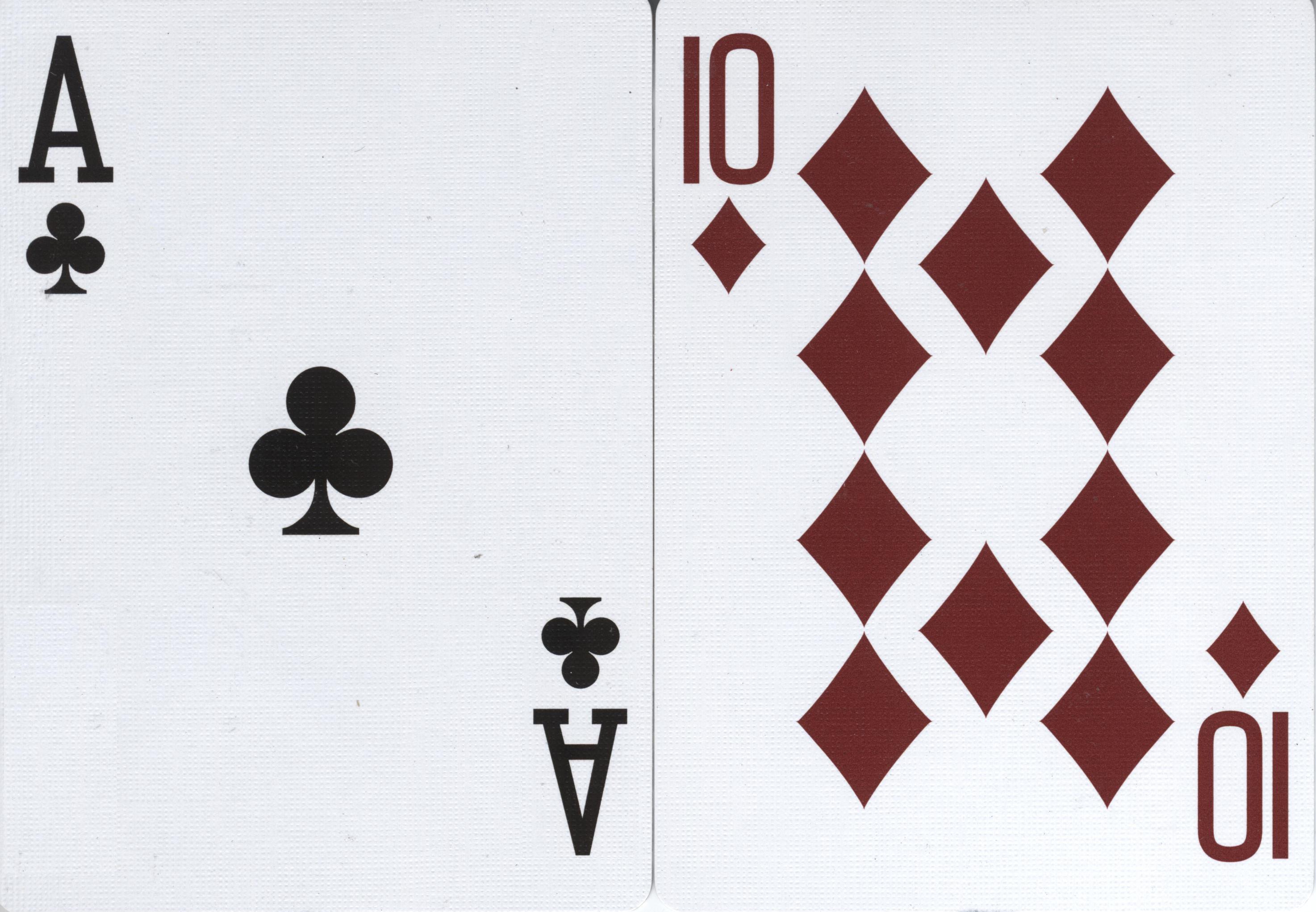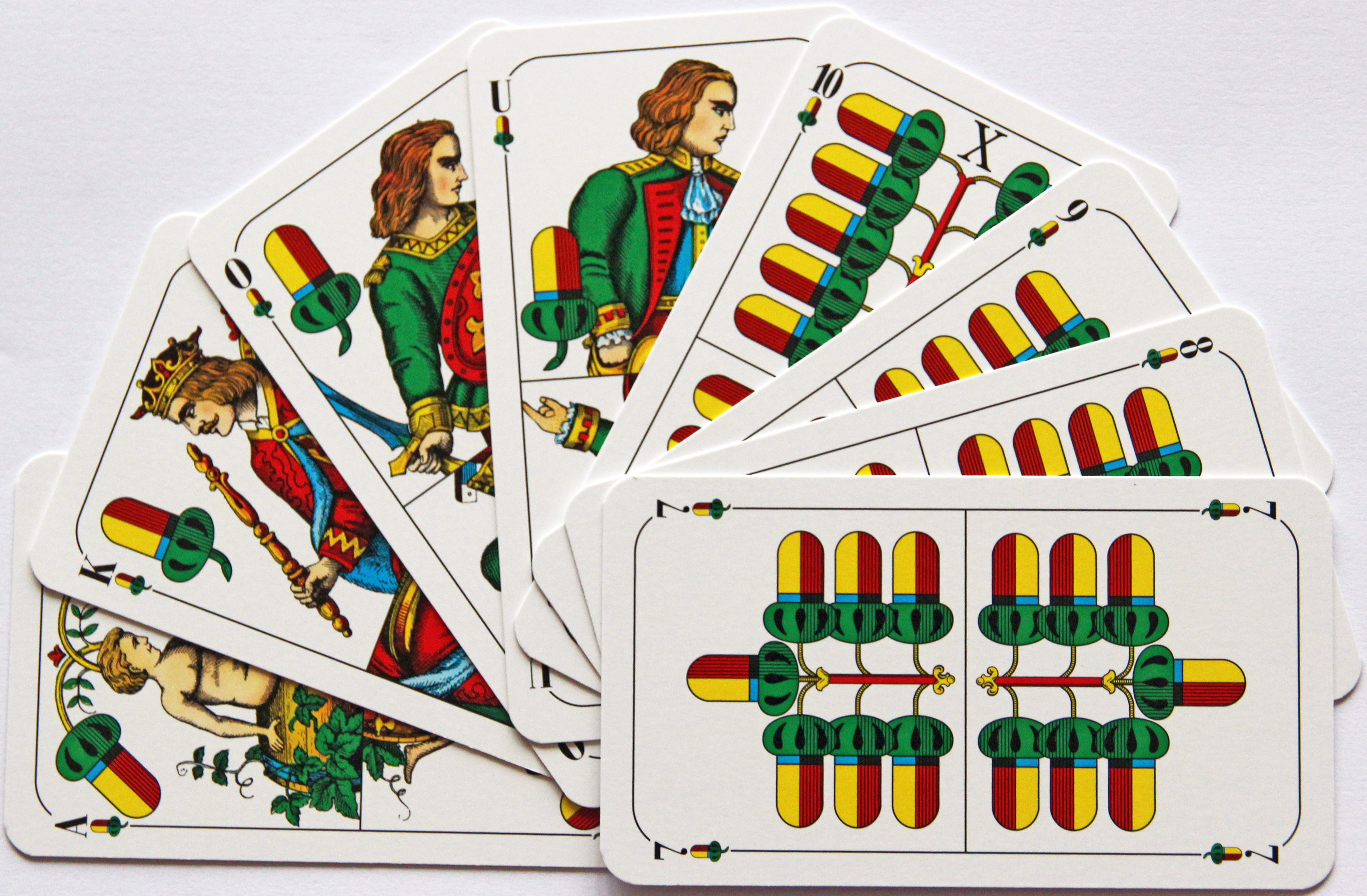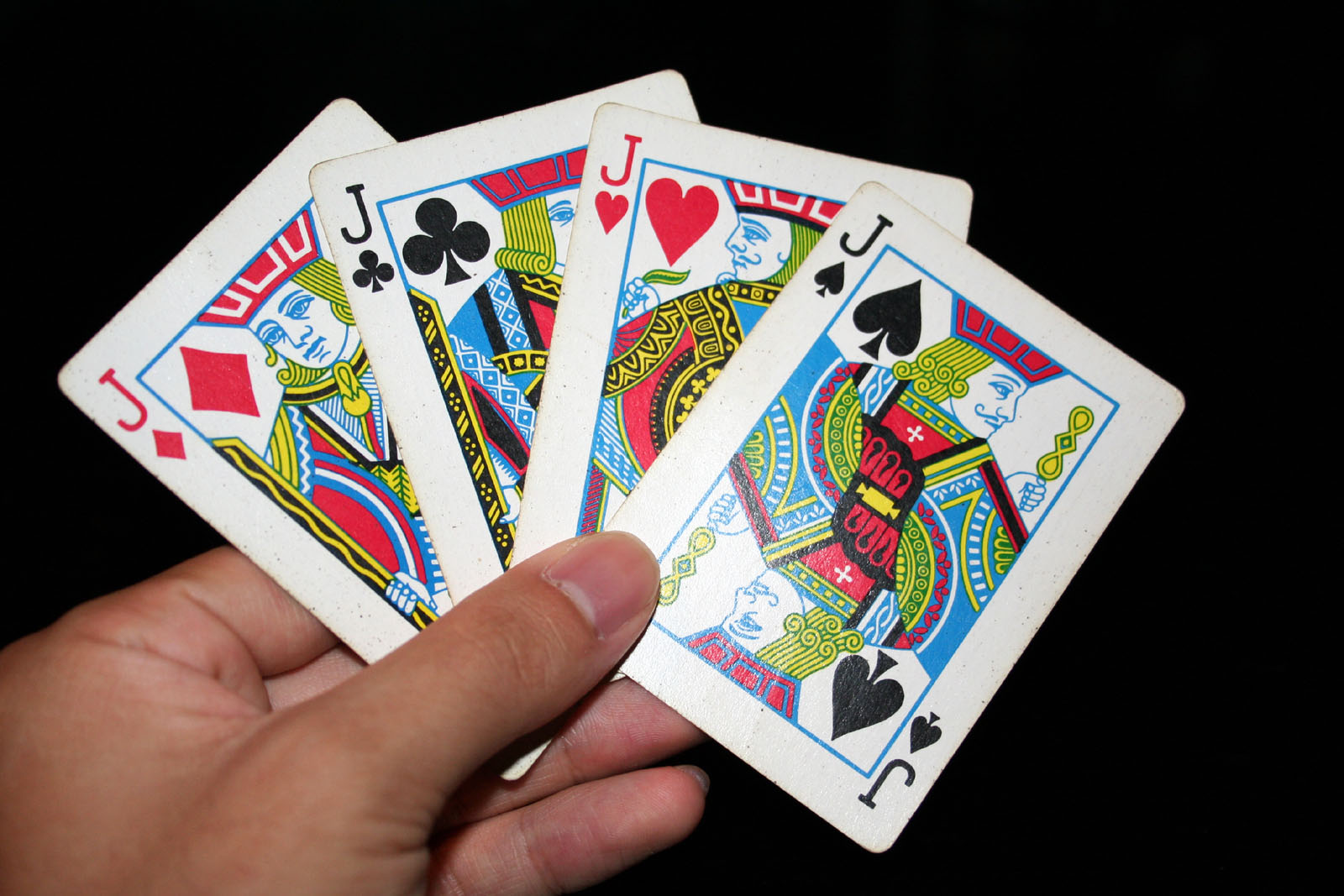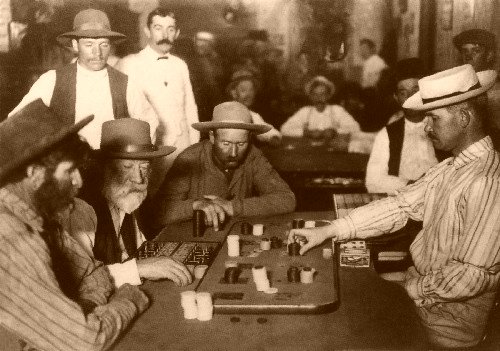|
Red Nines
Red Nines is a simple card game of the Stops family for four or more players. It is largely a game of luck, and is suitable for players of any age. Games with more than four players are best when played without hesitation. It has a modern variant called Pink Nines. History Games of the Stops family trace their history back to the 17th century French game of Hoc de Mazarin, named after Cardinal Mazarin, prime minister to Louis XIV and an avid card player. Hoc was a three-stage game where the third stage involved getting rid of cards in numerical sequence with the aid of wild cards known as ''hocs'' or, in English, stops. It was this final stage that evolved into the much simpler game of Manille which was renamed Comet on the appearance of Halley's Comet in 1682,Parlett (1991), p. 118. because the run of cards resembled a comet. In this game, the was called the ''Manille'' or ''Comet'' and was a wild card. The entire pack was dealt to between three and five players and the aim ... [...More Info...] [...Related Items...] OR: [Wikipedia] [Google] [Baidu] |
Stops Group
The following is a glossary of terms used in card games. Besides the terms listed here, there are thousands of common and uncommon slang terms. Terms in this glossary should not be game-specific (e.g. specific to Bridge, Hearts, Poker or Rummy), but apply to a wide range of card games. For glossaries that relate primarily to one game or family of similar games, see Game-specific glossaries. A ; Ace # The card with one pip in a pack of cards. Usually the highest card of a suit, ranking immediately above the King. May also occupy the lowest rank. # Commonly refers to the Deuce or Two in German-suited packs which don't have real Aces. Often the highest card of a suit. ; Acorns : One of the four suits in a German-suited pack of cards. Symbol: ; active # A card that is in play i.e. not sleeping. # See active player. ; active player # A player who receives cards in the current deal (i.e. is not sitting out because there are more players than the game is designed for as ... [...More Info...] [...Related Items...] OR: [Wikipedia] [Google] [Baidu] |
Vingt-Un
Twenty-one, formerly known as vingt-un in Britain, France and America, is the name given to a family of popular card games of the gambling family, the progenitor of which is recorded in Spain in the early 17th century. The family includes the casino games of blackjack and pontoon as well as their domestic equivalents. Twenty-one rose to prominence in France in the 18th century and spread from there to Germany and Britain from whence it crossed to America. Known initially as ''vingt-un'' in all those countries, it developed into pontoon in Britain after the First World War and blackjack in Canada and the United States in the late 19th century, where the legalisation of gambling increased its popularity. History Spanish origins The game is first mentioned by name in a 1611 Spanish dictionary where, under the entry for "card" (''carta''), it mentions the game of ''ventiuno'' ("twenty-one"). Just two years later, the first brief description of the game is given in a novella by Spa ... [...More Info...] [...Related Items...] OR: [Wikipedia] [Google] [Baidu] |
Discard (cards)
The following is a glossary of terms used in card games. Besides the terms listed here, there are thousands of common and uncommon slang terms. Terms in this glossary should not be game-specific (e.g. specific to Bridge, Hearts, Poker or Rummy), but apply to a wide range of card games. For glossaries that relate primarily to one game or family of similar games, see Game-specific glossaries. A ; Ace # The card with one pip in a pack of cards. Usually the highest card of a suit, ranking immediately above the King. May also occupy the lowest rank. # Commonly refers to the Deuce or Two in German-suited packs which don't have real Aces. Often the highest card of a suit. ; Acorns : One of the four suits in a German-suited pack of cards. Symbol: ; active # A card that is in play i.e. not sleeping. # See active player. ; active player # A player who receives cards in the current deal (i.e. is not sitting out because there are more players than the game is designed for as ... [...More Info...] [...Related Items...] OR: [Wikipedia] [Google] [Baidu] |
Eldest Hand
Card players are those participating in a card game. Various names are given to card players based on their role or position. Position Games of Anglo-American origin In games of Anglo-American origin played in English-speaking countries, age refers to the order of priority in which players make the first lead, bid or bet, based on their position at the table.''The Language of Cards'' at www.parlettgames.uk. Retrieved 4 August 2018 This changes constantly as the dealer rotates either clockwise or anticlockwise around the table. They are traditionally referred to as follows: ; Eldest hand (or elder hand): the player who enjoys greatest priority and e.g. is the first to receive cards in the deal. Elder is the non-dealer in two-hand games. ; Youngest hand (or younger hand): the player who has the lowest p ... [...More Info...] [...Related Items...] OR: [Wikipedia] [Google] [Baidu] |
Cut (cards)
In card games, to cut the cards (also "cut the deck" or "cut the pack") is to split the deck into two packets by lifting one packet from the top and placing it face down beside the remainder; before placing the lower packet on top of it. This is typically done after the cards have already been shuffled, and the procedure is used just prior to the cards being dealt to the players. The aim of this is to reduce the possibility of cheating, for example, by knowing the bottom card. Cutting the cards is also a common way of determining the seating order at a card table, the partnerships or the first dealer. Purpose The practice of cutting is primarily a method of reducing the likelihood of someone cheating by manipulating the order of cards to gain advantage. Even if the dealer (or the shuffler, if he is not the dealer) does not plan on cheating, cutting will prevent suspicions, thus many rules require it. Some players also consider the cut to be lucky. Parlett says the purpose of c ... [...More Info...] [...Related Items...] OR: [Wikipedia] [Google] [Baidu] |
Shuffles
Shuffling is a procedure used to randomize a deck of playing cards to provide an element of chance in card games. Shuffling is often followed by a cut, to help ensure that the shuffler has not manipulated the outcome. __TOC__ Techniques Overhand One of the easiest shuffles to accomplish after a little practice is the overhand shuffle. Johan Jonasson wrote, "The overhand shuffle... is the shuffling technique where you gradually transfer the deck from, say, your right hand to your left hand by sliding off small packets from the top of the deck with your thumb." In detail as normally performed, with the pack initially held in the left hand (say), most of the cards are grasped as a group from the bottom of the pack between the thumb and fingers of the right hand and lifted clear of the small group that remains in the left hand. Small packets are then released from the right hand a packet at a time so that they drop on the top of the pack accumulating in the left hand. The proc ... [...More Info...] [...Related Items...] OR: [Wikipedia] [Google] [Baidu] |
Pool (cards)
The following is a glossary of terms used in card games. Besides the terms listed here, there are thousands of common and uncommon slang terms. Terms in this glossary should not be game-specific (e.g. specific to Bridge, Hearts, Poker or Rummy), but apply to a wide range of card games. For glossaries that relate primarily to one game or family of similar games, see Game-specific glossaries. A ; Ace # The card with one pip in a pack of cards. Usually the highest card of a suit, ranking immediately above the King. May also occupy the lowest rank. # Commonly refers to the Deuce or Two in German-suited packs which don't have real Aces. Often the highest card of a suit. ; Acorns : One of the four suits in a German-suited pack of cards. Symbol: ; active # A card that is in play i.e. not sleeping. # See active player. ; active player # A player who receives cards in the current deal (i.e. is not sitting out because there are more players than the game is designed for ... [...More Info...] [...Related Items...] OR: [Wikipedia] [Google] [Baidu] |
Dealer (card Player)
Card players are those participating in a card game. Various names are given to card players based on their role or position. Position Games of Anglo-American origin In games of Anglo-American origin played in English-speaking countries, age refers to the order of priority in which players make the first lead, bid or bet, based on their position at the table.''The Language of Cards'' at www.parlettgames.uk. Retrieved 4 August 2018 This changes constantly as the dealer rotates either clockwise or anticlockwise around the table. They are traditionally referred to as follows: ; Eldest hand (or elder hand): the player who enjoys greatest priority and e.g. is the first to receive cards in the deal. Elder is the non-dealer in two-hand games. ; Youngest hand (or younger hand): the player who has the lowest p ... [...More Info...] [...Related Items...] OR: [Wikipedia] [Google] [Baidu] |
Knave (playing Card)
A Jack or Knave, in some games referred to as a bower, is a playing card which, in traditional French and English decks, pictures a man in the traditional or historic aristocratic or courtier dress, generally associated with Europe of the 16th or 17th century. The usual rank of a jack is between the ten and the queen. History The earliest predecessor of the knave was the (second or under-deputy) in the Mamluk card deck. This was the lowest of the three court cards and like all court cards was depicted through abstract art or calligraphy. When brought over to Italy and Spain, the was made into an infantry soldier or page ranking below the knight card. In France, where the card was called the valet, the queen was inserted between the king and knight. The knight was subsequently dropped out of non-Tarot decks leaving the valet directly under the queen. The king-queen-valet format then made its way into England. As early as the mid-16th century the card was known in England ... [...More Info...] [...Related Items...] OR: [Wikipedia] [Google] [Baidu] |
Play (cards)
The following is a glossary of terms used in card games. Besides the terms listed here, there are thousands of common and uncommon slang terms. Terms in this glossary should not be game-specific (e.g. specific to Bridge, Hearts, Poker or Rummy), but apply to a wide range of card games. For glossaries that relate primarily to one game or family of similar games, see Game-specific glossaries. A ; Ace # The card with one pip in a pack of cards. Usually the highest card of a suit, ranking immediately above the King. May also occupy the lowest rank. # Commonly refers to the Deuce or Two in German-suited packs which don't have real Aces. Often the highest card of a suit. ; Acorns : One of the four suits in a German-suited pack of cards. Symbol: ; active # A card that is in play i.e. not sleeping. # See active player. ; active player # A player who receives cards in the current deal (i.e. is not sitting out because there are more players than the game is designed for as ... [...More Info...] [...Related Items...] OR: [Wikipedia] [Google] [Baidu] |
Deal (cards)
A card game is any game using playing cards as the primary device with which the game is played, be they traditional or game-specific. Countless card games exist, including families of related games (such as poker). A small number of card games played with traditional decks have formally standardized rules with international tournaments being held, but most are folk games whose rules vary by region, culture, and person. Traditional card games are played with a ''deck'' or ''pack'' of playing cards which are identical in size and shape. Each card has two sides, the ''face'' and the ''back''. Normally the backs of the cards are indistinguishable. The faces of the cards may all be unique, or there can be duplicates. The composition of a deck is known to each player. In some cases several decks are shuffled together to form a single ''pack'' or ''shoe''. Modern card games usually have bespoke decks, often with a vast amount of cards, and can include number or action cards. This t ... [...More Info...] [...Related Items...] OR: [Wikipedia] [Google] [Baidu] |









